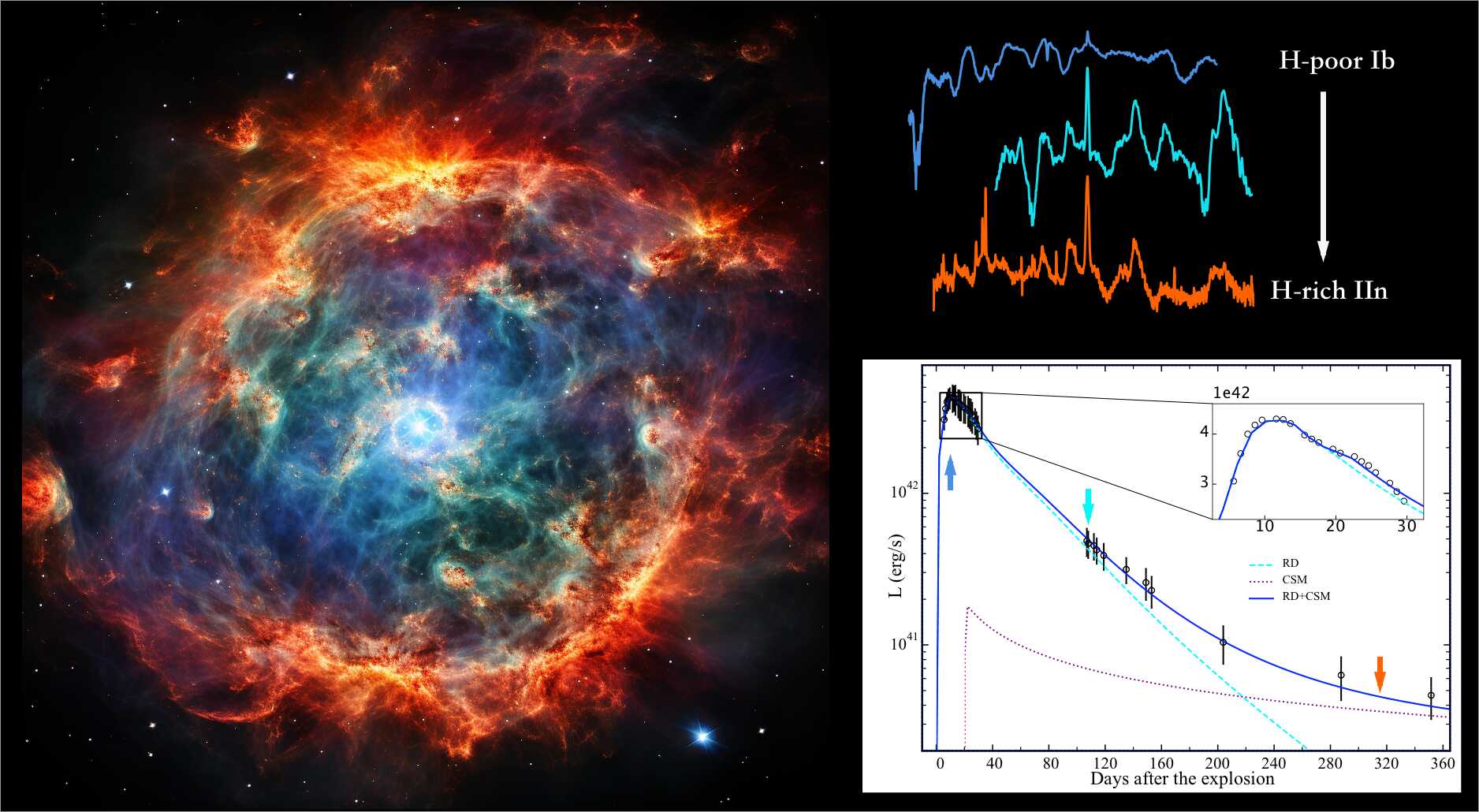An international collaboration led by Dr. ZHAI Qian from the Yunnan Observatories of the Chinese Academy of Sciences has made significant advancements in the observational study of the metamorphic supernova - SN 2014C, providing crucial insights into the explosion mechanisms of this rare type of supernova (SN) and the final evolutionary stages of its progenitor star. The research findings were published in The Astrophysical Journal.
SN 2014C is a well-known SN that has undergone a remarkable transformation in the spectral classification, evolving from an initially hydrogen-poor Type Ib to a hydrogen-rich Type IIn. This transformation indicates that the progenitor star of SN 2014C had almost completely shed its outer hydrogen envelope prior to the explosion, and a dense circumstellar material (CSM) had formed nearby. Such a rare and complex phenomenon has fascinated astronomers for the past decade.
Based on observations made with the Lijiang 2.4m telescope, the researchers released the most comprehensive early data of SN 2014C, revealing earlier evidence of the interaction between SN and CSM, filling the gap in information about the inner layers of the CSM. By constructing a model combining radioactive decay and delayed interaction, the researchers successfully explained the complex and variable light curve behavior of SN 2014C.
These observations have unveiled the detailed physical processes during the initial stages of SN 2014C's explosion and provided key clues to its subsequent spectral transformation. By integrating early photometric data, late-time spectral data, and radio and infrared observations spanning a decade, the research team found that the CSM around SN 2014C is not uniformly distributed but exhibits a U-shaped structure. This complex circumstellar environment significantly impacts the SN’s light curve and spectral evolution.
Thus, this research deepens the understanding of the unique supernova SN 2014C and provides invaluable experience for studying metamorphic supernovae in general.

Figure 1: Left: A schematic diagram of SN 2014C and its outer CSM, showing the gradual interaction between the SN ejecta (blue-white circle in the middle) and the outer CSM after the explosion. Top-right: Spectral evolution from a hydrogen-poor SN Ib to a hydrogen-rich SN IIn. Bottom-right: Bolometric luminosity and its model fitting, revealing the additional energy provided by the SN-CSM interaction present from the early stages. The colored arrows indicate the corresponding light curve epochs for the spectral evolution shown above. Image by ZHAI.
Contact:
ZHAI Qian
Yunnan Observatories, CAS
Email: zhaiqian@ynao.ac.cn